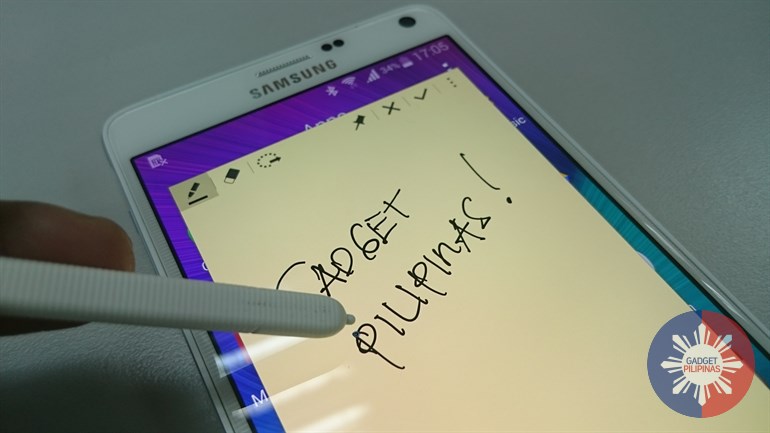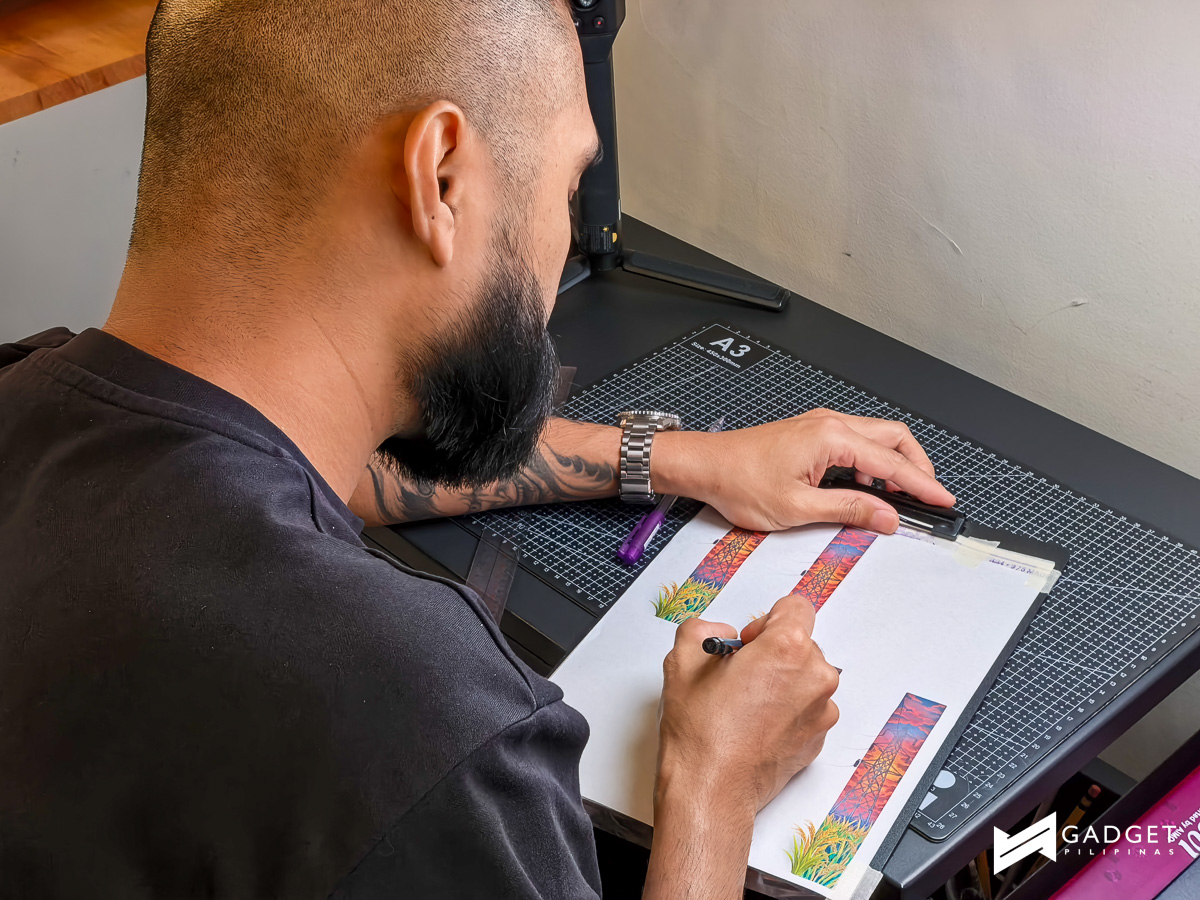
The latest Galaxy Note series phablet from Korea-based Samsung was launched late last month at an official event here in Manila, Philippines, and we were fortunate enough to get a unit for some hands-on testing. In case you don’t know, Samsung is already on the fourth iteration of its patented stylus-toting Android smartphone, and it’s dubbed the Galaxy Note 4. What follows is our experience with it as prose.
There are several things worth talking about on the Galaxy Note 4, given that it offers more than half a dozen new feature additions over its predecessor. But here we’re going to focus only on the most important ones. Mainly, the Note 4’s higher-resolution screen, more powerful camera, and better S-Pen stylus. These are some of the things that we tested first as we spent our time with it.
Higher than hi-def

Measuring 5.7-inches diagonally, the display on the new Galaxy Note is the same size as the one on the old model. However, its resolution has been bumped up to QHD territory. The Note 4 screen comes with a resolution of 2560×1440 pixels; it’s one of the first phones in the local market with a Quad-HD display. And it’s a joy to behold.
It didn’t matter whether we were using the Note 4 outdoors or in a completely darkened room — the performance of the display didn’t let us down. The UI was responsive and colors looked vivid. The display certainly performed beyond our expectations, although at times it ended up feeling a bit too big physically. The presence of hardware buttons — particularly the Home button — was the main cause of this minor niggle.
Physical features

There are a handful of different hardware buttons scattered all over the Galaxy Note 4. Along the right sits the power button, which also acts as a lock/unlock switch. And on the left you’ll find a volume rocker that you can use to turn the volume up or down.
Meanwhile, right below the display is a hardware Home button flanked by two backlit capacitive menu keys. The key on the left is for Recent Apps while the key on the right is for Back.
In terms of usability, these hardware buttons were mostly helpful. But there were many instances wherein trying to hit the Home button ended up in us launching an app pinned to the bottom of the Home screen instead. Apparently, we kept misjudging where the touchscreen ended and where the Home button was located, and so we inadvertently kept hitting the onscreen icons when trying to reach the bottom row of physical keys.
It might have been just us, but the simple fact is that the Galaxy Note 4’s screen is kind of like a double-edged sword here: it may be as useful as it is large, but its size can also end up being a cause of problems sometimes, depending on how you use it.
Camera prowess

Of course, if you end up buying the Note 4 on your own, then you probably know what you’re getting into. Yes, there’s a large, high-quality screen and built-in S-Pen stylus support. There’s also a 16-megapixel rear-facing camera with built-in optical image stabilization (OIS). This is one of the things that makes the Note 4 better than the Note 3. And if you’re into mobile photography, then you’re going to appreciate the improvements that it brings.
As a matter of fact, both the rear camera as well as the front camera performed to our expectations. Photos taken with the rear cam had the correct exposure more often than not, and as you might expect, you are free to choose the point of focus in photos based on your own preference.
Front camera selfies turned out excellent as well. And what’s even better is that you can further customize the photos with the help of the software, just like you can with most other Android or Samsung Galaxy handsets. In short, in our quick hands-on testing at least, the Note 4’s camera performance seemed to be adequate for mildly serious mobile photography.
“S” stands for serious

Speaking of serious, the Galaxy Note 4 is like all of the previous Note series phablets that came before it: geared towards heavy users, mainly business types and people who want a phone that will enable them to get things done. Well, we certainly got to do much of that and more during our Note 4 hands-on testing.
If you’ve ever used a Galaxy Note in the past, then you’ll find that the stylus on the Note 4 really is just an improved version of everything else that came before it. It’s still made out of plastic with a single physical button near the middle, and it can be kept safe inside a built-in stylus dock at the back of the phone when it’s not in use.
The new S-Pen is actually quite representative of the Note 4 itself, as a whole. It’s taken many of the things that people already know and love about the Note series and simply piled some new things on top. Unfortunately, some of the old issues are also still present — like the physical size which we’ve already mentioned. But it can be argued that the pros easily outweigh the cons.
Wrap-up
The Galaxy Note 4 is, of course, more than just a phone that happens to work with a physical pen. It relies heavily on custom software features that separate it from literally millions of other Android phone models in circulation.
If you’re a fan of Samsung-made apps and software options, then you’ll have plenty of stuff to enjoy here. And even if you aren’t too fond of TouchWiz or any of Samsung’s other UI enhancements, it’s still possible for the Note 4 to grow on you. We know it did with us.
Sure, it’s nowhere near as affordable as many of today’s local mobile phone offerings, but the Galaxy Note 4 is a complete package unlike any other. If you’re a serious Android user and it falls within your budget, go and get it. And just like Samsung Mobile Philippines says, you may just end up surprising yourself. One thing we can say for sure is that, unless you get a lemon, you’re not likely to be disappointed.





